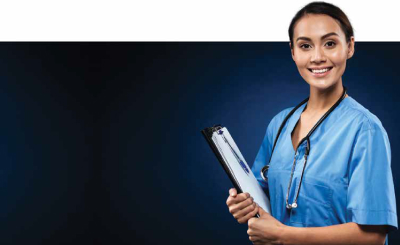The article discusses the need to develop and implement technologies that help nurses, and not having nurses to work for technology. The piece emphasizes how integrating innovation enablers into current operations can help support nurses in their work to provide better patient care and increase job satisfaction.

Digital transformation, Clinical AI, Population Health, Hospital@Home, are just a few of the many technology-supported healthcare (r)evolutions we hear and read about every day.
A recent study from McKinsey & Company entitled “Reimagining the nursing workload: Finding time to close the workforce gap” got my immediate attention. People who know me, know that improving working conditions for nurses is high on my priority list after having experienced their struggle over a period of 12 years.
The McKinsey & Company study is the first time I have read a report that touches on how technology can be used to optimise nursing teams’ efficiency from a nursing point of view together with analysts’ insights. The study provides clear indicators that efficiencies can be improved by approximately 30 per cent on roughly 45 per cent of nurses’ daily activities. And these figures don’t even take into account the ongoing digital transformations hospitals are undertaking. While the study is focused on finding a way to close the workforce gap (nurse shortages), which is without a doubt, a critical issue to be solved, I’m looking at the situation more from an individual nurse level.
In the news we hear about nurse shortages, high burn-out rates, and requests for wage increases. It’s clear that all these elements are real and important and require more attention. My many interactions with nurses have taught me that the main reason people become nurses in the first place, is to provide care to patients. The McKinsey & Company study clearly validates this reasoning. Unfortunately, nurses currently only spend approximately 50 per cent of their time in direct contact with patients, with a strong request to increase it. And it’s my personal believe that increasing direct patient contact can help reduce burn-out rates and increase personal satisfaction on the job they do so well. Are we there yet? No!
We need to develop and implement technologies that work for nurses rather than nurses working for the technology. A clear bad example of this were the early-stage hospital information systems and electronic medical records. Luckily things have changed for the good, however, there is still work to be done. Since, as you may have already noted, I’m not an HIS/EMR expert, I will focus my discussion on some insights that I believe are regularly overlooked, perhaps because they are not “high-tech” enough.
It should be noted that nurses spend 90 per cent of the time on their feet , with 13 per cent to 18 per cent of the time walking , and 10 per cent to 14 per cent of the time searching for tools and people (staff) . The McKinsey and & Company study touches on technology and delegation requirements, which aligns with my first point: mobility must be the first consideration. Providing a mobile device, like a smartphone or even a DECT phone, to nurses to use at the point of care or anywhere they need it is essential.
So, let’s talk about smartphone “connectivity” and “communications” as this is a critical element for IT because of the increased cybersecurity attack surface. And since the subject of smartphone cybersecurity requires more than a short article, I will try to keep this brief.
If you choose Wi-Fi-based connectivity, as it is still the most comprehensive solution in a healthcare setting, you will need to setup a Wi-Fi network for smartphones similar to other Internet of Things (IoT) devices. This will require creating a dedicated but dynamic Wi-Fi segment (SSID Containment) with Role-based Access Control and Application Visibility with Enforcement, allowing all the necessary macro- and micro-segmentation. Because you will need to support realtime applications, like collaboration, you will need to have the right enterprisegrade equipment to support fast roaming and other technical specifications. For device management, you will need to consider a professional Enterprise Device Management solution that works easily with your selected smartphone brand. But we’ll come back to that later, when we discuss notifications. For DECT, it is straightforward, just install separate IP-DECT Base Stations and the rest is linked to- and managed by- the IP-PBX.

Once connected, you need ‘communications’. For this discussion communications will refer to external calls, and links to patients, not comprehensive I know, but it will all make sense shortly. Communications are official conversations between the hospital and patients that require compliance. While it makes sense that a doctor should not provide their mobile number to a patient, sometimes it is important to have a record of conversations for compliance reasons. To ensure compliancy, all communications need to be controlled by a mission-critical IP-PBX (on premises or in the cloud) and provide an extension to the smartphone, regardless of whether the smartphone is connected using Wi-Fi or whether the staff is using it outside the hospital. A professionally implemented connectivity and communications solution is the “foundation” of everything.
With a strong mobile foundation in place, we come to my second point: optimising the care pathway by improving efficiencies is accomplished by combining the following three innovation enablers; Collaboration Services, Notification or Messaging Services and Location Services. All hospitals either have or are investigating these enablers. However, the real power doesn’t come from each individual service, but rather from integrating the three services into your operations. And so, the question remains — are we there yet?
Let’s take a deeper dive into the three innovation enablers.
Collaboration Services — the ability to text, call (audio or video), share (files, picture) one-to-one or in a group, having presence information and even the ability to register for information channels — is a very well-known solution. WhatsApp is just one example. However, whatever you select, please ensure that it is healthcare compliant. All data must belong to the organisation, including user management and data backup. Collaboration can help your staff get the information they need, in a mobile setting, when and how they need it. In the context of the recent global health crisis, collaboration was the tool of choice to provide contactless handover between shifts, to inform staff about changes in processes, as well as to connect patients with their family members at home. A good collaboration tool that is compliant and connected with your communication tools is essential. But as I mentioned previously, it’s not just about collaboration.
Location and context-aware collaborations are critical. One of the key technologies embedded in collaboration is presence, such as knowing when a person is behind their desk, online or busy. Now, imagine enriching that presence information with location information and context. For example, being able to see when a doctor is on duty or entering the hospital, or perhaps when they enter the operating room the presence identifier automatically changes to ‘do not disturb’. Additionally, we can think about when a nurse enters a ward, and they are automatically added to the ward’s collaboration group, making contactless handover a breeze. The advantages are endless. A question like, ‘can I speak with the doctor’ is simplified with location- and context-based collaboration. You can see the doctor’s presence status, when they are off duty you can see the replacement, and you can choose the best method to reach out, based on that status or urgency. Today’s modern collaboration tools are paving the way to replace existing pagers.
Messaging services provide the ability to inform staff about events, from Code Blue notifications to other events that can help teams improve efficiency. A good messaging service must meet several criteria. It must be easy to integrate into the existing environment, have an open architecture and provide not just ‘messages’ but contextual messages, including information that can help resolve the issue. For example, a message coming from an alarm event, and enriched with contextual information, could be forwarded to the closest and available person able to attend to the situation.
Location services let you track people and assets, find them when needed and get notified when they enter or leave a defined area (known as geofences), with the simple press of a button. These are pretty standard services provided by asset tracking solutions. However, if they include contact tracing and or have flexible alert methodologies that can be very helpful. As mentioned previously, when we combine location services with messaging and collaboration services the benefits are exponential. Streamlining processes is just one example. In the past, if a device or tool was faulty, a nurse would need to open a form or write an email or call someone, but nurses have no time for that. Today, just pressing a button, mounted to the device or tool, will automatically start the process. A technician will be informed about the faulty device using messaging and it will include the device or tool location.
Together, these services drive efficient collaboration, workflows, processes and of course reduce the search time and loss of hospital equipment. They are key to optimising the care pathway for better outcomes and part of the technology advancements McKinsey & Company reference in their study.
On a side note, we need to take a moment to talk about Staff Duress, a tool nurses can use when in distress. With the press of a button colleagues and/or security guards can be notified, using messaging, to come immediately to help out. With this tool they have the location information and the ability to remotely connect using the smartphone to listen in on the situation as it unfolds.
The good news is that in many organisations there are already some aspects of the three services. Integrating them must be the next step. And so, we ask again — are we there yet?
Another area that requires consideration as identified in the McKinsey & Company study is delegation. Delegation is a method of reaching out to colleagues to transfer a task. Once collaboration and messaging services are in place, it becomes very easy to delegate tasks when needed. Additionally, providing patients with terminals, like tablets, enables them to make specific requests such as for water, or room cleaning, and allows staff to direct the requests, using messaging, to the appropriate individual.
Everything we’ve talked about will not be simple, however, many aspects are already underway, in one form or another. But it is not just technology. It’s also about processes, procedures and compliance. Working with the right technology provider can help ensure you are headed in the right direction.
As my catch phrase, ‘Are we there yet?’ suggests this is a journey. However, it’s one in which we are making clear advances as we help our nurses do the job they want to do, by optimising today’s technology to provide the best possible care for their patients.